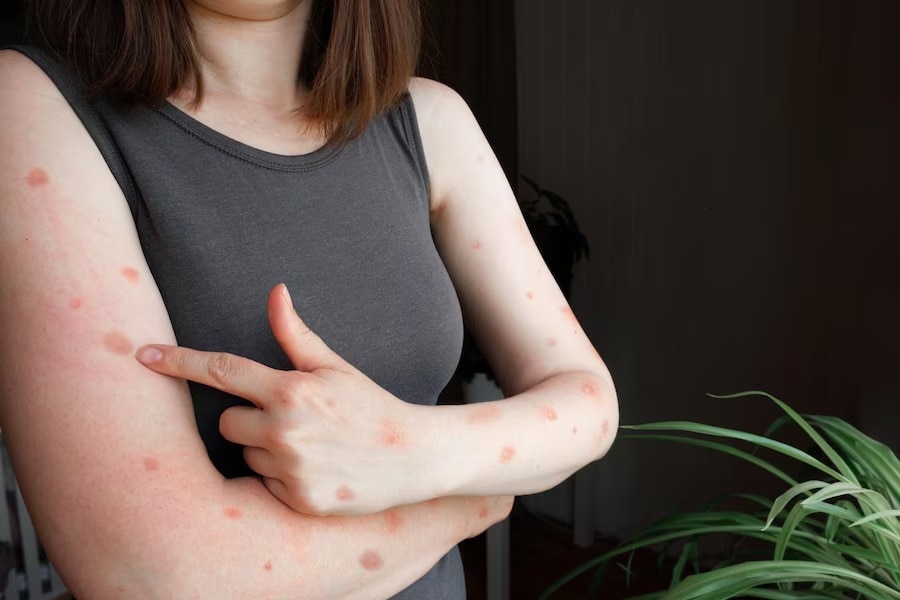India is on high alert after confirming its first Mpox case of the year on Monday. Let’s take a closer look at its symptoms, treatment and precautions to be more alert.
The Union Health Ministry on Monday confirmed the first case of monkeypox in India. In a press release, the government said that a 26-year-old man from Hisar in Haryana has tested positive. He was admitted to the Delhi Government’s LNJP Hospital on Saturday with symptoms like rashes and boils. His test reports confirmed that he is infected with mpox clade 2 virus. The news has health advisors worried, prompting Indians to take precautions. Let’s take a closer look at the monkeypox virus to better understand its symptoms and the precautions required when infected. Being informed can help in effectively managing and preventing the spread of the virus.
What is the Mpox virus? How is it transmitted?
According to Dr Aklesh Tandekar, chief consultant, intensive care, Wockhardt Hospital, Mira Road, “Monkeypox is a viral infectious disease that can be dangerous for humans and animals. People with weak immune systems, children, especially infants, and pregnant women are more likely to get this infection. Living or travelling in areas where there is an outbreak of monkeypox can make you more prone to contracting the infection.”
He added: “Mpox infection is different from Covid-19 infection and should not be confused. The virus is normally found in central and western Africa and recent outbreaks have been observed in the United States, Europe, Australia and animal reservoirs which are rodents and non-human primates. The virus is transmitted by direct contact with skin lesions or rashes of an infected person, body fluids (blood, sweat, semen), indirect contact with contaminated surfaces or objects, bedding or clothing, airborne transmission through respiratory droplets and prolonged face-to-face contact.”
Variants
- Central African variant: This variant is found in the Democratic Republic of the Congo and has a higher mortality rate (around 10-15%).
- West African variant: This variant is found in Nigeria and other West African countries and has a lower mortality rate (around 1-3%).
Additionally, there are two subclades within the West African variant:
- Clade I: Found in Ghana and Nigeria, people are more symptomatic and have high mortality.
- Clade II: Found in Nigeria and other West African countries, it is highly transmissible and has lower mortality. It is worth noting that the current global outbreak is primarily caused by the West African variant, specifically Clade II. Research is ongoing to better understand the genetic diversity of MPox and its implications for transmission, severity, and vaccine efficacy.
Symptoms
The incubation period is 10 to 14 days, prodromal phase (0 to 4 days). Common symptoms are fever, headache, muscle aches, swollen lymph nodes, rash or lesion phase which lasts 1 to 3 weeks and may present flat, red spots or blisters which progress to pus-filled blisters and then form crusts. It is imperative to visit the doctor and start treatment without delay.
The doctor may also perform a physical exam and monitor your symptoms. Other laboratory tests that will be performed are polymerase chain reaction (PCR), serologic tests (IgM and IgG) and virus isolation is the gold standard for diagnosis when it comes to viral infections. The treating physician will provide symptomatic treatment to control this viral infection and improve the patient’s quality of life.
Treatment
Palliative care will be in the form of symptom control, prevention of complications and prescription of antiviral medications such as Tecovirimat (TPOXX) and Brincidofovir (CMX001). Self-medication can be risky so you should be alert. Vaccines such as smallpox vaccine (Imvamune) and MPox vaccine (Jynneos) will also be recommended.
Precautions
To protect yourself from this viral infection, maintain good hygiene practices such as washing your hands, avoid sharing items such as clothing, toothbrushes, toiletries, makeup or skin care products, towels and bedding, do not come into close contact with infected people, isolate the person if they have symptoms such as rash or injury, use personal protective equipment (PPE) including gloves, masks, gowns and vaccination for high-risk people.
